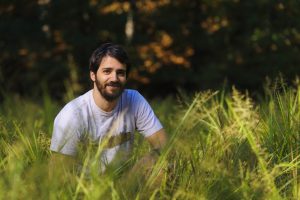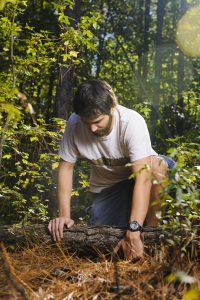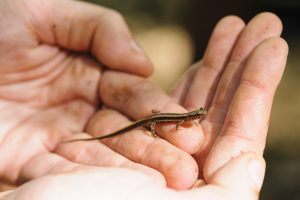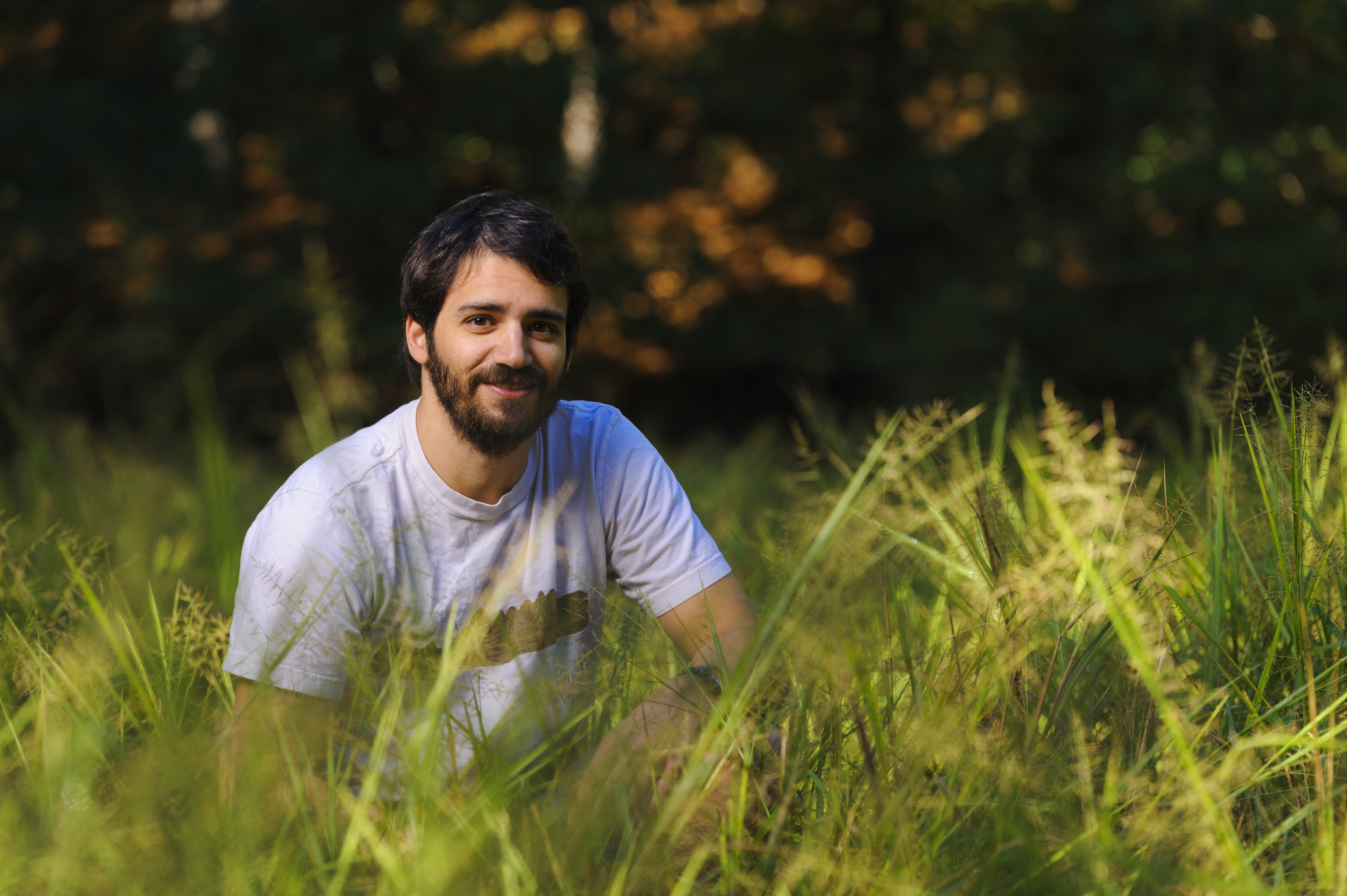By Kristi Payne
Photos by Jeff Hanson

He’s hiked for miles through dense woods, camping alone and braving the elements of the Appalachian Mountains’ backcountry for weeks at a time. He’s faced off against territorial deer and listened from within a tent while a bear ravaged his campsite in the middle of the night. He’s been caught in hailstorms, mudslides and torrential downpours.
No, he’s not the star of one of television’s reality survival programs. He’s University of Alabama doctoral student Nicholas Caruso, and, for several years, he’s endured all of this and more in the name of studying the changing morphology of the region’s dense salamander population.
And the salamanders, it turns out, are shrinking.
As part of recent research projects performed in collaboration with the Smithsonian Institute, Caruso and his colleagues have captured and measured some 9,500 of the slippery amphibians.
Comparison of their data to measurements of the museum’s specimens, which have been collected from the same sites since the 1950’s, revealed a significant reduction in the average size of several species over the last half century.
That reduction, Caruso believes, is due to climate change.
“The current hypothesis for the link between salamanders and climate change is that warming conditions have led to an increase in metabolic expenditure in terrestrial salamanders,” Caruso says. “Since salamanders are ectothermic, their body temperatures conform to their environment; thus warmer temperatures will lead to warmer salamanders.”
And if the salamanders aren’t compensating for the resulting increase in metabolic activity by increasing their caloric intake, their growth may be reduced, which could have a significant impact on the area’s food chain and ecosystem.
“We know that salamanders form an important intermediate link in forest food webs between the insect populations and small mammals, birds and reptiles,” Caruso says. “Therefore reductions in salamanders could lead to an increase in the insect population as they are released from their predators or a reduction in the predator population, because they would lose their food source.”

As part of his work with the Smithsonian, Caruso recently co-authored a paper on the subject for a journal, Global Change Biology, and it garnered significant attention from the news media.
Caruso’s faculty adviser, Dr. Leslie Rissler, professor and curator of herpetology in the UA department of biological sciences, says the attention is well deserved. Previous studies documented size reduction in a variety of organisms and linked that reduction to climate changes, but she says Caruso’s research is groundbreaking in fostering an understanding of the mechanisms driving those changes.
“The beauty of Nick’s study is that he was able to compare historical trends in body size with current trends,” Rissler says. “This highlights the importance of natural history collections.”
Studies like Caruso’s are essential because salamanders are one of the most highly endangered organisms on the planet, and maintaining healthy populations is crucial not only to local ecosystems, but, according to Rissler, can even have an impact on the global carbon cycle.
“Studies have shown that salamanders (regulate) the abundance of species that feed on decaying leaves,” she says. “Thus, carbon is stored in the bodies of salamanders rather than being released to the atmosphere.”
Caruso, who received his master’s degree from the University of Maryland, says he elected to pursue his doctoral degree at UA specifically to work in Rissler’s lab. He wanted to study salamanders within an evolutionary context and says he felt that working under Rissler, who is the co-director for the evolutionary studies minor and chair of the Evolution Working Group at UA, would best suit his goals.
That decision has served him well. Caruso’s research at UA earned him a prestigious E.O Wilson Fellowship, which provides recipients with a summer stipend to support research activities in areas related to biodiversity in natural environmental settings.
“As an E. O. Wilson fellow, Nick (was) able to spend the summer in the field devoting all his time to understanding why these amazing animals appear to be shrinking and what that means for the future health of our forests,” says Rissler.

Since his return from the Appalachians, he’s been conducting a new round of experiments to better understand the genetic and plastic influences of salamander morphology. One such study involves sectioning femurs from preserved specimens in order to analyze growth rates.
He’s also looking to the future. Having served as a teaching assistant in anatomy and physiology labs on campus, Caruso has developed a love for instruction and says he plans on staying in academia once he’s earned his doctoral degree.
He also hopes to continue working with the Southern Appalachian salamanders, but, with science and academia notoriously underfunded, he recognizes the merit in keeping his options open.
“My main research interests are centered on ecology and population biology,” he says. “(But) I plan on keeping my interests as broad as possible to not limit myself in the future.”
And Rissler, who has worked side-by-side with Caruso since he arrived at UA, indicates he has what it takes to excel in any undertaking he chooses.
“Nick has been a joy to have in the lab,” says the College of Arts and Sciences professor. “I’ve been delighted to mentor someone with such drive, intelligence and commitment to conservation.”
Kristi Payne is a junior from Pinson majoring in interdisciplinary studies with New College Life Track. She is a student writer for UA Media Relations.
